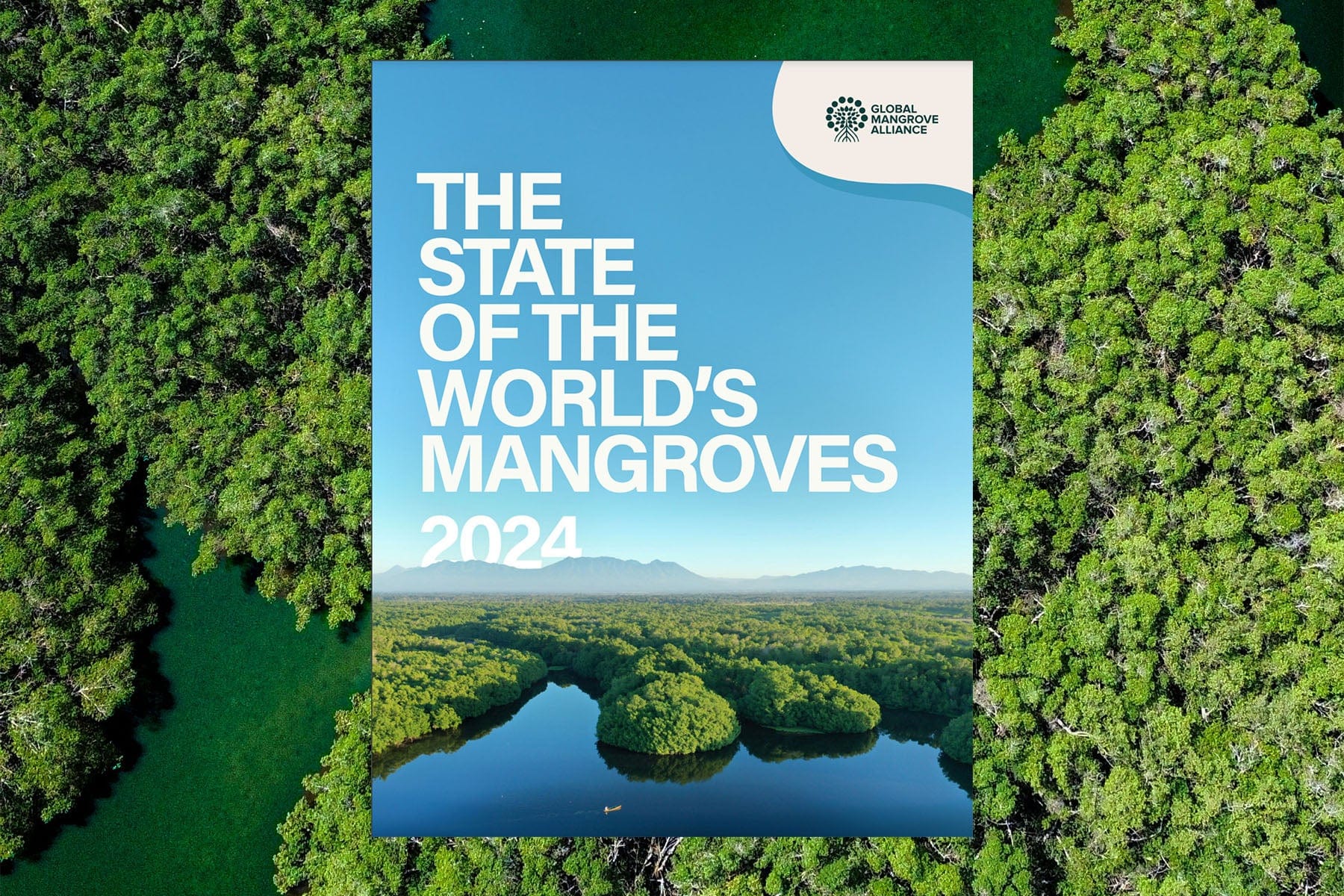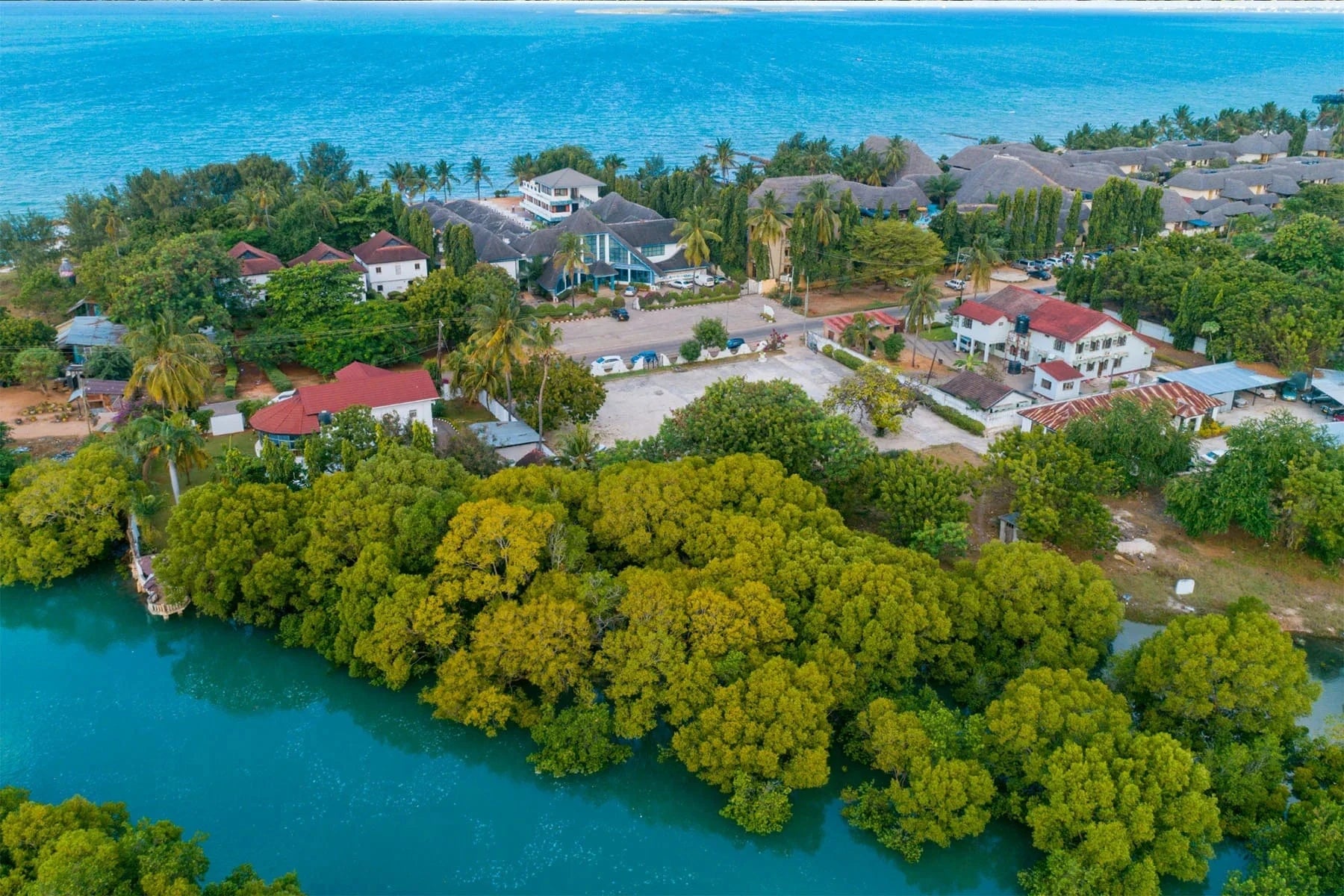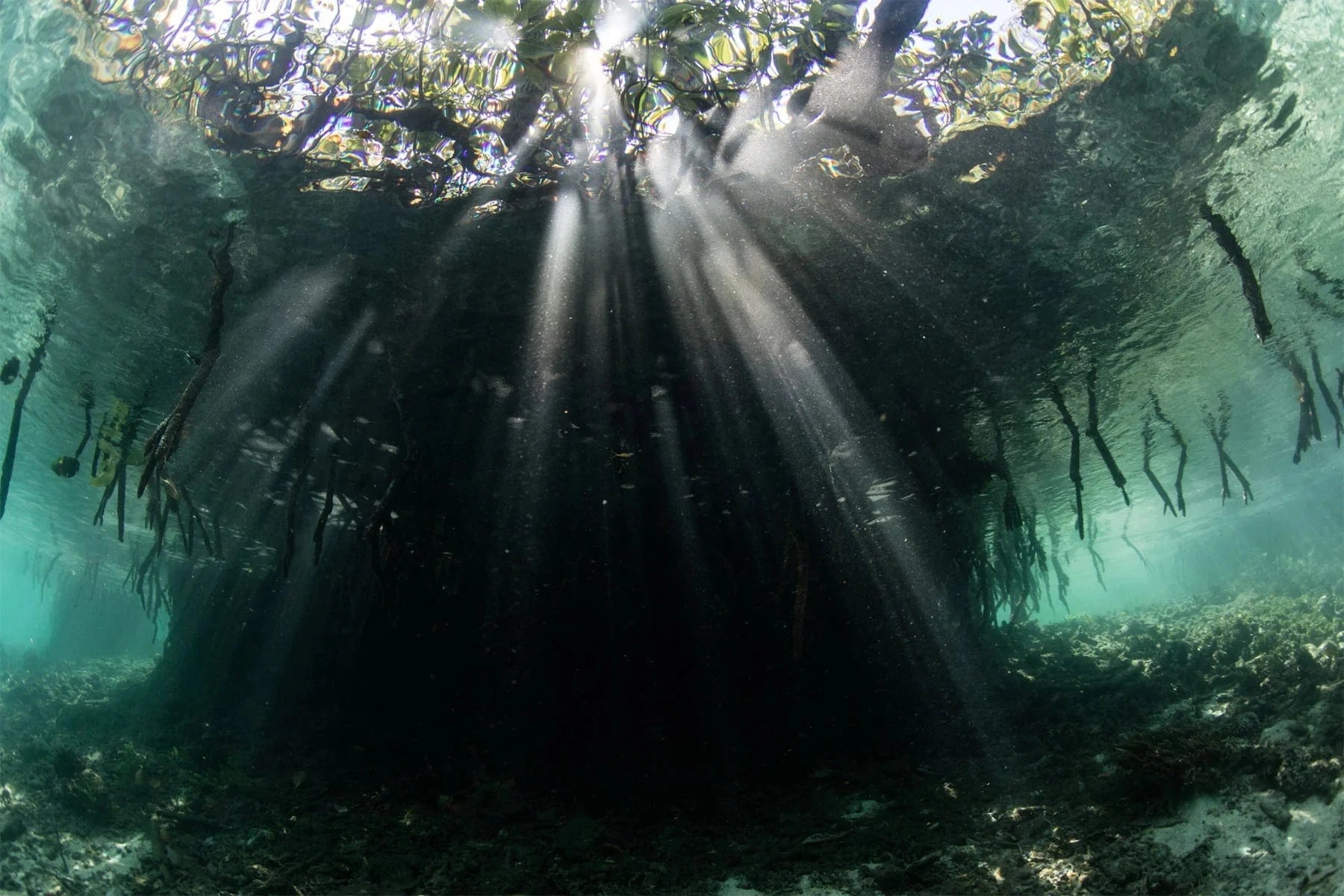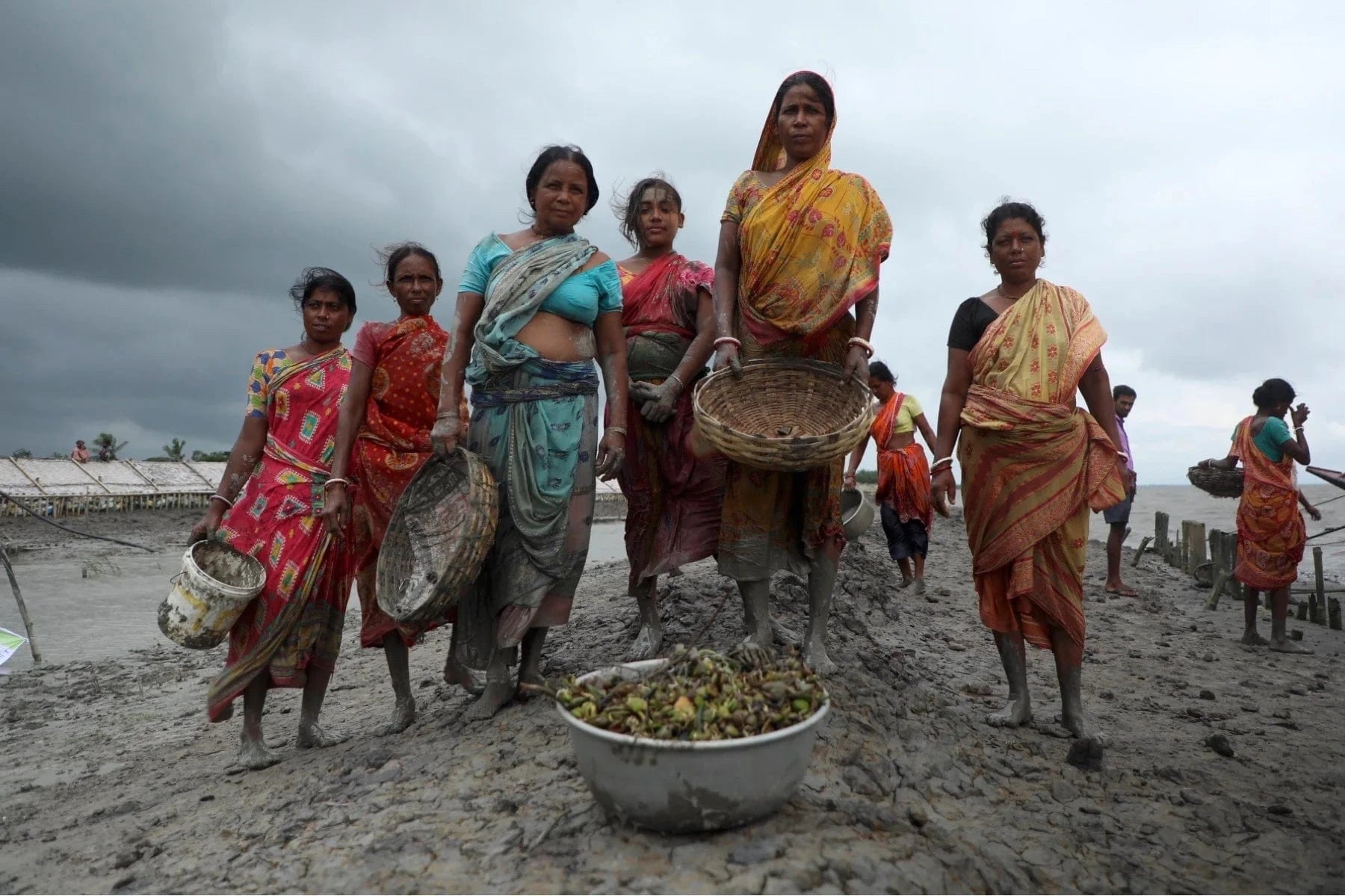
Get news, updates, & event Info delivered right to your inbox:
Mangroves grow along the world’s tropical and subtropical coastlines, bridging land, freshwater, and ocean ecosystems. They are among the most unique trees on the planet, and can grow in conditions that would quickly kill most plants. Mangrove forests play a critical planetary role by storing 10X more carbon than mature tropical forests, providing habitat for biodiversity, and shielding vulnerable communities from intensifying storms.
We are proud to be one of 100+ member organizations of the Global Mangrove Alliance, which drives conservation and restoration of the world’s mangrove forests. The alliance has ambitious goals: to halt mangrove loss, restore half of the world’s lost mangroves by 2030, and double the area of protected mangroves globally. Every year, the Global Mangrove Alliance releases a report outlining the inspiring advances that have been made to protect these critical ecosystems — and the tools and frameworks that make this work so successful.

Read the Report: The State of the World’s Mangroves 2024
The State of the World’s Mangroves Report 2024 provides an assessment of the latest scientific advancements and policy efforts to protect mangrove forests. The report also features 60+ case studies and examples of field-based research that are contributing to global and national goals. Read the report to learn more!
Key Takeaways
While we recommend digging into the report to gain a fuller picture of the status and importance of mangrove forests, here are four key takeaways you should know about.

Wildlife
One of the most productive ecosystems on earth, Mangroves provide critical habitat for a unique range of species. New modeling estimates that the world’s mangrove forests support nearly 800 billion young fish, prawns, bivalves, and crabs annually. Their trunks and roots shelter and protect invertebrate species like oysters, snails, and barnacles from predators. Migrating birds shelter in their branches, as well as nearby mudflats, pools, and channels. And terrestrial biodiversity finds shelter and food, too: including mammals, reptiles and amphibians, and insects.
Many species are endemic to mangroves: including 48 birds, 14 reptiles, one amphibian, and six mammals. 40% of these are threatened with extinction. The waters where mangroves grow are home to additional species, such as the critically endangered sawfish, as well as dugongs and manatees. The Sunderbans, the world’s largest mangrove forest, shelters threatened species such as tigers, fishing cats, estuarine crocodiles, and horseshoe crabs. And that’s just the tip of the iceberg when it comes to mangroves and biodiversity.

Communities
Mangroves shield coastal communities from storm surges, critical at a time when 1.3% of the global population lives in areas that are exposed to 100 year coastal flood events. Coastal floods happen during high tides, storm surges, and waves that submerge low-lying coastal land. They can have devastating impacts for communities that live within coastal areas. A recent study by Delft University of Technology found that mangroves reduce flood depth by an average of 15-20%, and up to 70% in some areas.
Mangroves also increase food security — and not just because they support 80% of global fisheries. In addition to fish and seafood, mangrove forests provide vegetables and herbs, plus fodder for livestock. These resources improve nutrition and can generate income, increasing access to food and other needed resources. They also help improve and stabilize environmental conditions, making it easier for people to grow food and other crops. Finally, they provide fuelwood for cooking and persevering food, and sanitizing water.

Climate
Mangroves are critical in the fight against climate change. They hold an average of 394 tonnes of carbon per hectare within their biomass — and in the top meter of their soils. Mangroves in Southeast Asia store the most blue carbon globally; in the Philippines, they hold an astounding 650 tonnes per hectare.
How? Mangrove trees store carbon in their biomass and soils. When their leaves fall off and sink into the mud and silt, they become what is known as coastal blue carbon (carbon that is captured by living coastal and marine organisms, and stored in coastal ecosystems). Unlike most other ecosystems, they can continually sequester carbon into their dense, waterlogged soils — and represent large stores of carbon that have accumulated over hundreds of thousands of years. In other words? Protecting existing mangrove forests and other coastal ecosystems is not just important for the wildlife and communities that directly depend on them. It's also critical to the fight against climate change.

Status
Conversion to aquaculture, oil palm plantations, and rice cultivation accounted for 43% of mangrove loss between 2000-2020. Today, mangroves are still threatened by aquaculture, natural retraction, rice cultivation, oil palm, direct and indirect settlement, wood extraction, and natural disasters. While aquaculture is the key driver, natural retraction has emerged as a more prominent threat in recent years.
Natural retraction — or, changes or losses of mangroves that are driven by movement in riverbeds, sediment inputs, or sea levels, is influenced by climate change, sediment shifts, and sea-level rise. Especially in relation to more frequent and severe cyclones, as well as sea level rise, the effects of climate change are a growing threat to mangroves.
The good news? Global mangrove loss has stabilized, according to the UN Environment Programme in 2023. A recent study found restoration efforts accounted for 25% of mangrove expansion in South and Southeast Asia, and 33% in Africa. Surprisingly, natural expansion made up 82% of the global increase in mangrove forest cover. In fact, natural expansion greatly exceeded mangrove loss due to natural retraction.
In other words? While the improved status of mangroves is something to celebrate, our work is far from done. According to the IUCN Red List of Mangrove Ecosystems, more than half of the world’s mangrove provinces are threatened. Want to help? Plant trees today!
Get news, updates, & event Info delivered right to your inbox:
Related Posts
8 Reasons to be Grateful for Trees This Thanksgiving
18/11/2025 by Meaghan Weeden
Why Should You Plant Trees for Giving Tuesday?
12/11/2025 by Meaghan Weeden
9 Things to do for Plant a Tree Day
23/09/2025 by Meaghan Weeden
Popular On One Tree Planted
What Causes Deforestation?
10/07/2025 by Meaghan Weeden
8 Amazing Bamboo Facts
14/01/2025 by Meaghan Weeden
Inspirational Quotes About Trees
09/01/2025 by Meaghan Weeden
Fundraising Disclosures

Be Part of the
Restoration Movement
The Grove is more than just a monthly giving program: it's a vibrant community of individuals who are dedicated to reforestation and environmental restoration on a global scale.
As a member of The Grove, you affirm your commitment to restoring forests, nurturing biodiversity, and fostering positive global change.





